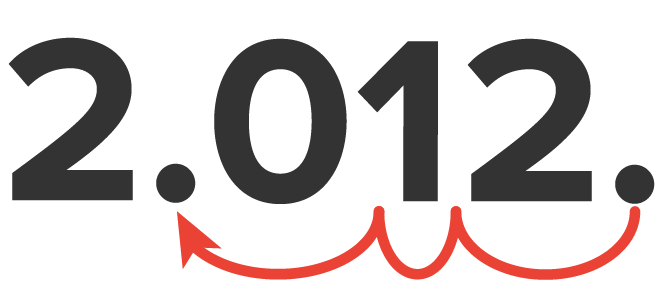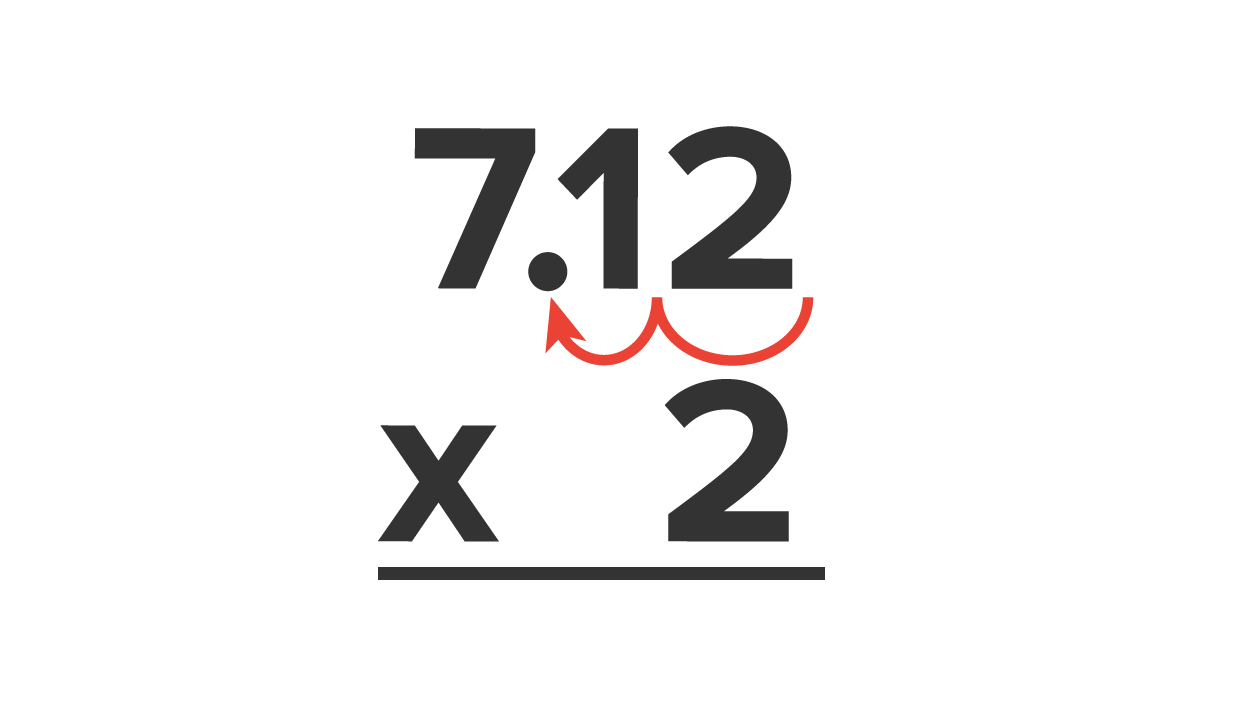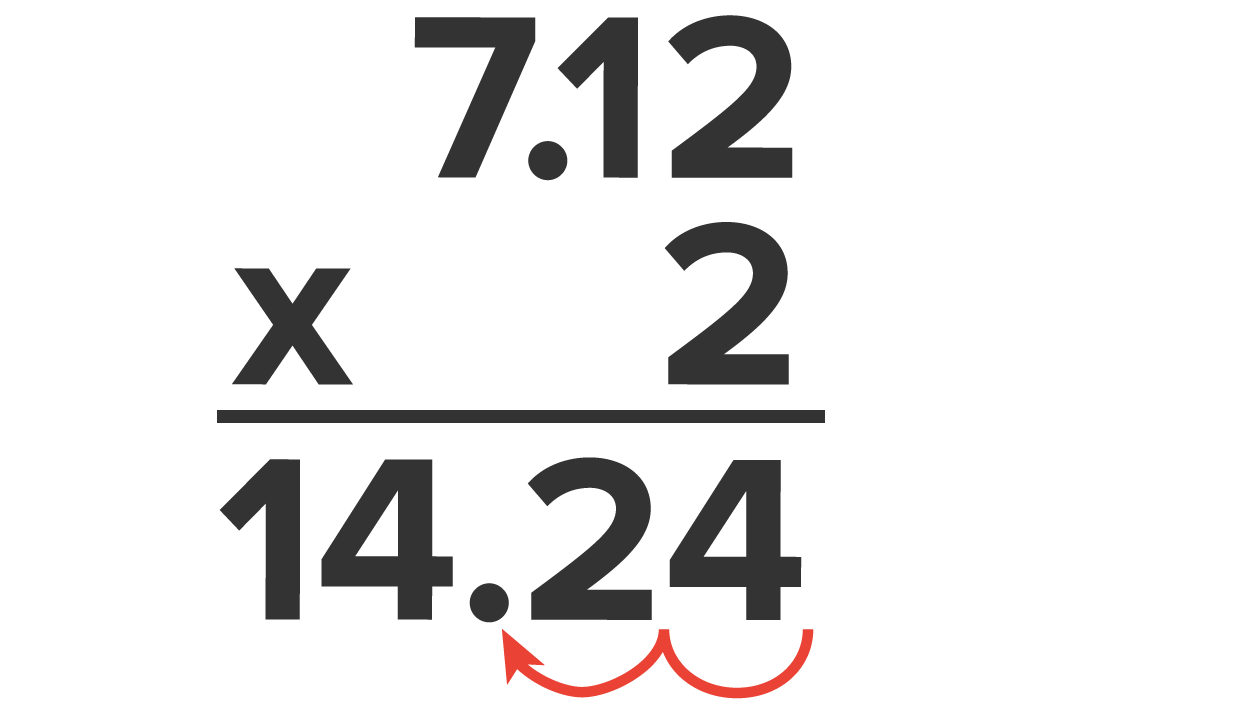Table of Contents |
When adding and subtracting decimals, you learned that the decimals places need to line up before you can add or subtract. When multiplying decimals, the decimal places do not need to line up like with addition or subtraction as we covered earlier. Instead, you multiply the values, and then determine where the decimal place belongs in your answer. To do that, count the number of places after the decimal point(s).
EXAMPLE
Multiply 5.03 by 0.4

EXAMPLE
Evaluate .
.

|
The expression |

|
When multiplying decimals, line up the numbers from right to left. Don’t worry about the decimal yet. You do not need to add in zeros when multiplying or dividing decimals. |

|
Multiply like you would if the decimals are not there. |

|
We now place the decimal in the solution. We add the number of decimal places in the numbers multiplied. Because 7.12 is the only number with decimals, there are 2 numbers after the decimal “1” and “2”. So, when we place our decimal in our solution we move the decimal starting from the right 2 decimal places to the left. |

|
Place the decimal place in the solution in the correct place, so the solution is 14.24. |
 .
.
Like multiplication of decimals, you can divide the values and then determine where the decimal belongs in your answer. When determining where the decimal goes, that depends on the decimal location of the divisor (the number you’re dividing by). If the divisor is a whole number, the decimal point is just moved into the answer. For example:


So, with the above example, you can just divide like normal and then move the decimal point up. However, what if the divisor includes a decimal point? The problem is, you can’t really divide by a decimal. So you’ll need to get rid of the decimal first. To do this, count the amount of times you’d move the decimal to make it a whole number and then move the decimal that many times over in your answer. For example:


Now, we can divide like before and move the decimal point straight up into the solution.

EXAMPLE
You go out to lunch with 3 of your friends. The bill comes to $32.12. You decide to split the bill evenly between all 4 of you. How much will each person pay?

|
To find how much each person pays, divide $32.12 by 4. |

|
Place the divisor (4) on the outside of the division symbol. |
 |
Place the decimal in the solution above the decimal in the number under the division. |

|
Divide using long division to find the solution of $8.03 per person. |
Problem Solving: Apply Your Skill |
Source: THIS TUTORIAL WAS AUTHORED BY SOPHIA LEARNING. PLEASE SEE OUR TERMS OF USE.